Recently, one of my clients asked if I would add some blue flowers to her garden. Her young daughter had learned that dogs are color-blind and can see only blues and yellows, and now she wanted to make sure their garden had blue flowers in it so that their dog would be able to enjoy them. Naturally my heart swelled and my list of blue flowers grew. I bolted to the nursery and picked up some favorites.
Because of this project, I learned to truly appreciate how blues add a cooling and calming splash of color. I also learned, after reading the book, How the Rose Got its Thorns and Other Botanical Stories, by Andrew Ormerod, that few plants produce anthocyanins, the pigments responsible for the blue hue, which is why blue flowers are relatively rare in nature. “They are most commonly found in environmentally impoverished habitats where pollinators are scarce—with its short wavelength, the color blue stands out and attracts bee pollinators,” he writes.
Here are eight of my favorite blue flowers (and possibly dog and bee favorites, too).
Featured photograph of baby blue eyes, above, by Joe Decruyenaere via Flickr.
1. Lobelia, Lobelia erinus ‘Magadi Compact Dark Blue’
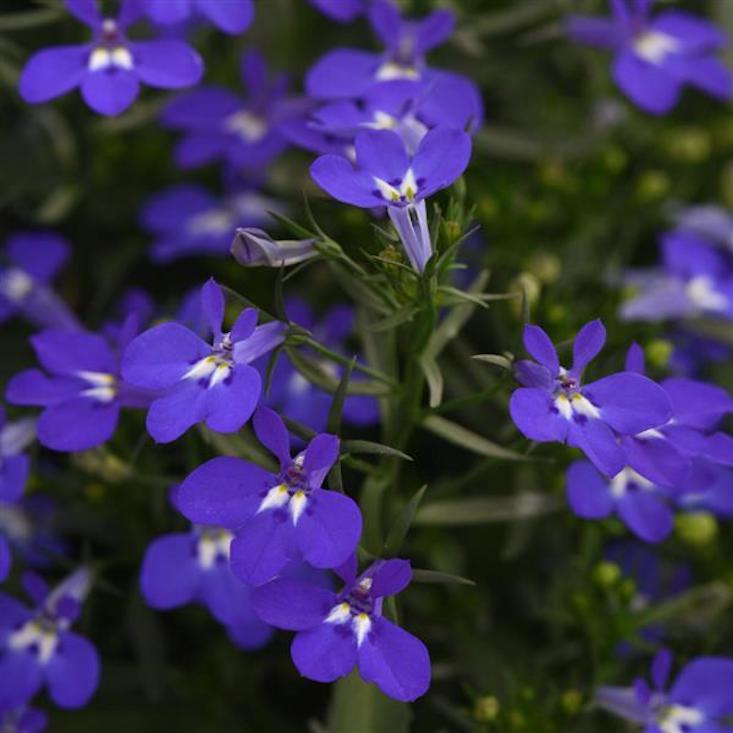
Sometimes you need a fast-growing annual to add to pots, containers, and window boxes that are in a sunny spot. This lobelia is so good at filling planting gaps with color. With a trailing habit, it’s slightly upright, slightly relaxed, and produces vibrant blue flowers in the spring through summer if deadheaded. In mild climates this annual can reseed—in a good way. Hardy in USDA Zones 8-11. I like to plant mine from six-packs or from seed.
2. Siberian bugloss, Brunnera macrophylla
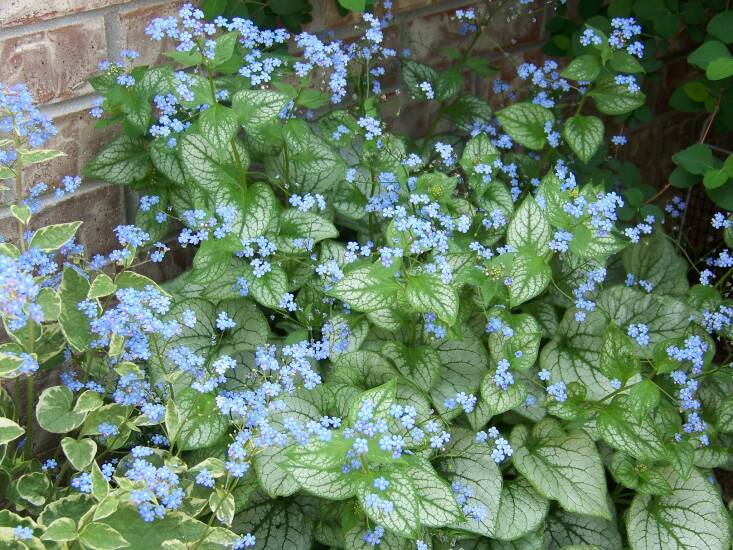
What makes this perennial extra cute are the heart-shaped leaves and the tiny baby-blue flowers that arrive in the spring and continue through the summer. Add this deer-resistant, easy-to-grow ground cover to a partly shaded cottage or woodland garden and pair it with hellebores, bleeding hearts, and ferns. Grows to 1 to 2 feet high and as wide. Hardy in USDA Zones 3-9.
3. Baby blue eyes, Nemophila menziesii
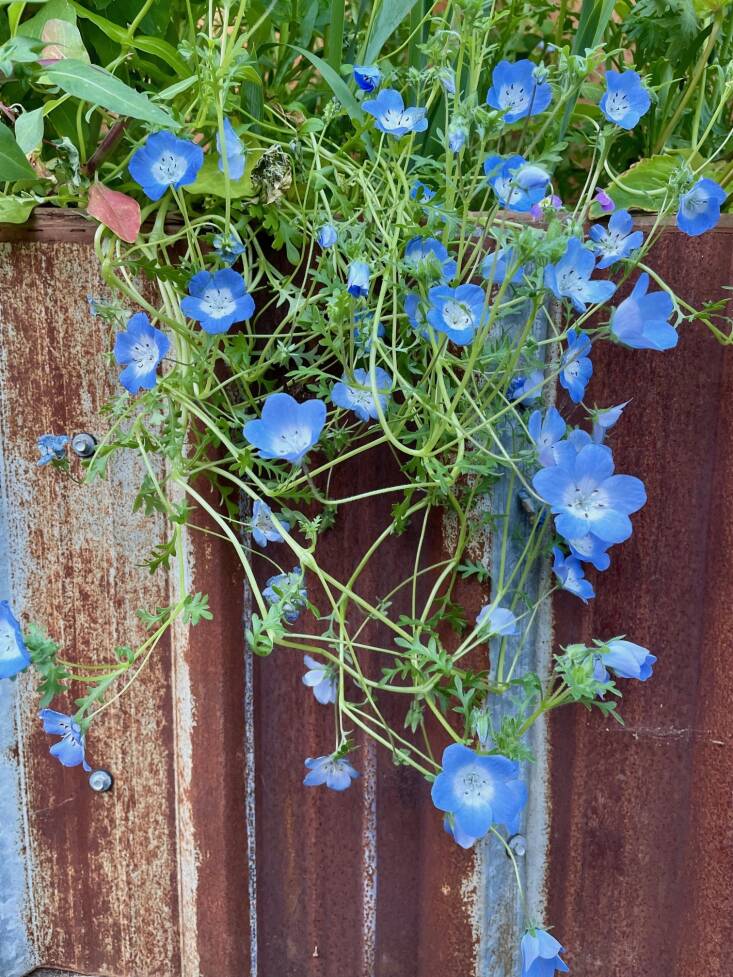
Native to California, this darling annual gifts you with bright blue dainty flowers in the spring. Easy to sow from seed, it is commonly added to wildflower seed mixes. Pro tip: Sow your seeds in a partly sunny spot and provide them with ample water. I sowed my seeds in the fall for my spring bloom, but I live in a warm-winter areas. In cold-winter areas, sow your seeds in the spring. The flower grows to a petite 10 inches high and in a container, will tumble playfully over the edges. You can purchase seeds through Larner Seeds.
4. Pincushion flower, Scabiosa Caucasica ‘Fama Deep Blue’
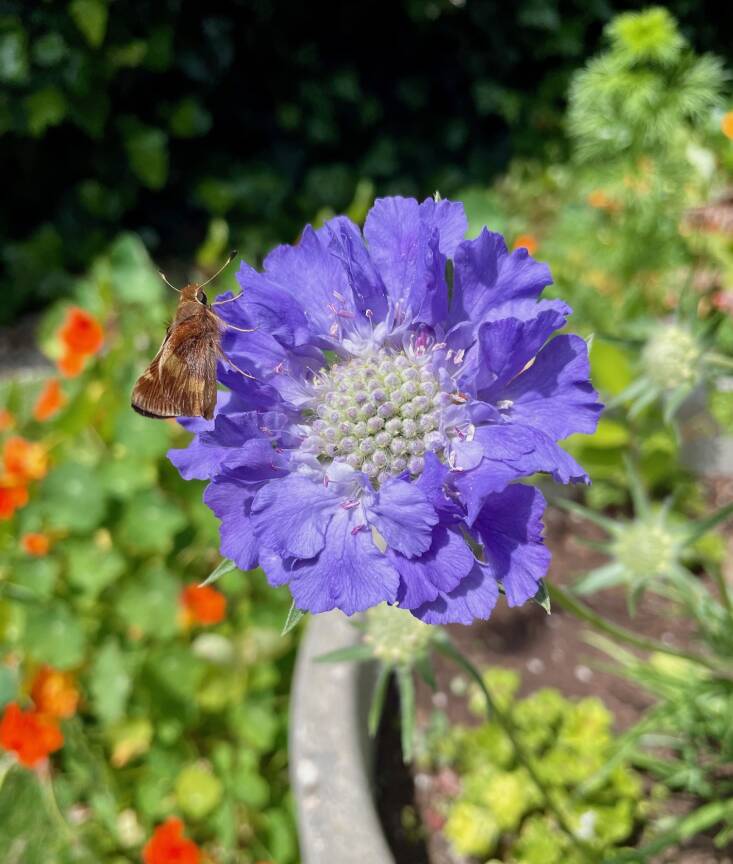
I grow this flower in my garden and and am rewarded with mega large ruffled blue blooms—4 inches across! I swear, these flowers are constantly buzzing with bees and butterflies from spring to fall. It also makes an excellent long-lasting cut flower, and the more I cut, the more blooms I get. Grows to 2 feet tall and wide and likes full sun and well-draining soil. Perfect when added to pots or edging a perennial bed or cutting garden. Hardy in USDA Zones 4-9.
5. Germander sage, Salvia chamaedryoides
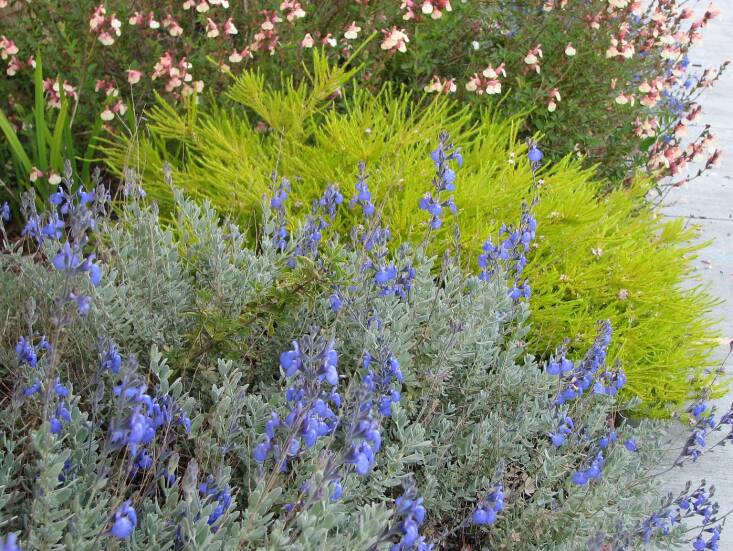
Native to Mexico, this silvery leafed evergreen subshrub grows to a little over 1 foot tall, spreads to 3 feet wide, and produces light blue flowers from mid-spring to fall if you deadhead the faded flowers. Pruning this plant mid-season also keeps it compact and stimulates fresh new growth. Low water, deer-resistant, and pollinator-friendly, this salvia is cold hardy down to USDA Zone 8. Other blue salvias to consider: Salvia nemerosa ‘Crystal Blue’ and Salvia azureaS.
6. Globe thistle ‘Blue Glow’, Echinops bannaticus

Definitely not to be confused with its weedier relative, this polite perennial pumps out steel-blue, Dr. Seuss-like spherical blooms on slender stems in the summer. Grows to 4 feet tall and 2 feet wide and makes a unique, long-lasting cut flower—dry or fresh. Poor, rocky soil doesn’t bother this sturdy plant. Bees, butterflies, and nocturnal moths love the nectar-rich tufts, and luckily deer and rabbits leave it alone. Great for rock or cutting gardens. Hardy in USDA Zones 3-8.
7. Blue cape plumbago, Plumbago auriculata ‘Imperial Blue’

This carefree mounding shrub sports sky blue flowers for many months and has serious cottage garden appeal. It’s also butterfly-attracting and surprisingly deer-resistant. The ultimate size of this shrub can vary from 6 to 20 feet high, depending on whether you let it scramble as a flowering ground cover (perfect for erosion control or slopes), or give it some support where it loosely climbs. Plant plumbago in a sunny to mostly sunny spot with good drainage. Bonus: it tolerates windy, seaside conditions. Hardy and evergreen to 25 degrees; otherwise consider it a fast-growing annual.
8. Borage, Borago officinalis

Edible star-shaped blooms adorn this old-fashioned and easy-to-grow garden herb. It’s the ultimate bright blue flower for supporting bees. Hardy in USDA Zones 3-10, borage grows quickly to about 1 foot high, likes a sunny to partly sunny spot, and can reseed freely if the spent flowers are not cut back. Perfect when paired with orange calendula and smart when added to a vegetable garden or orchard to attract necessary pollinators.
See also:
- My Blue Heaven: 7 Favorite Bulbs to Plant Now for Blue Flowers in the Spring
- Hydrangeas: How To Change Color from Pink to Blue
- Gardening 101: Blue Throatwort










Have a Question or Comment About This Post?
Join the conversation